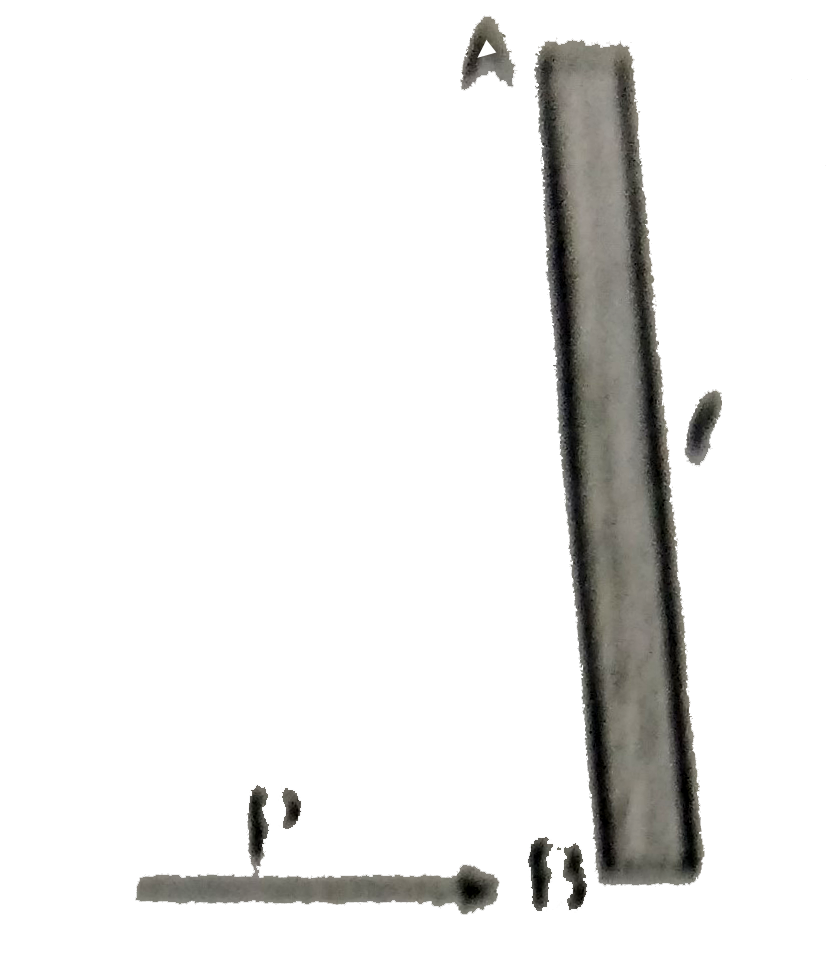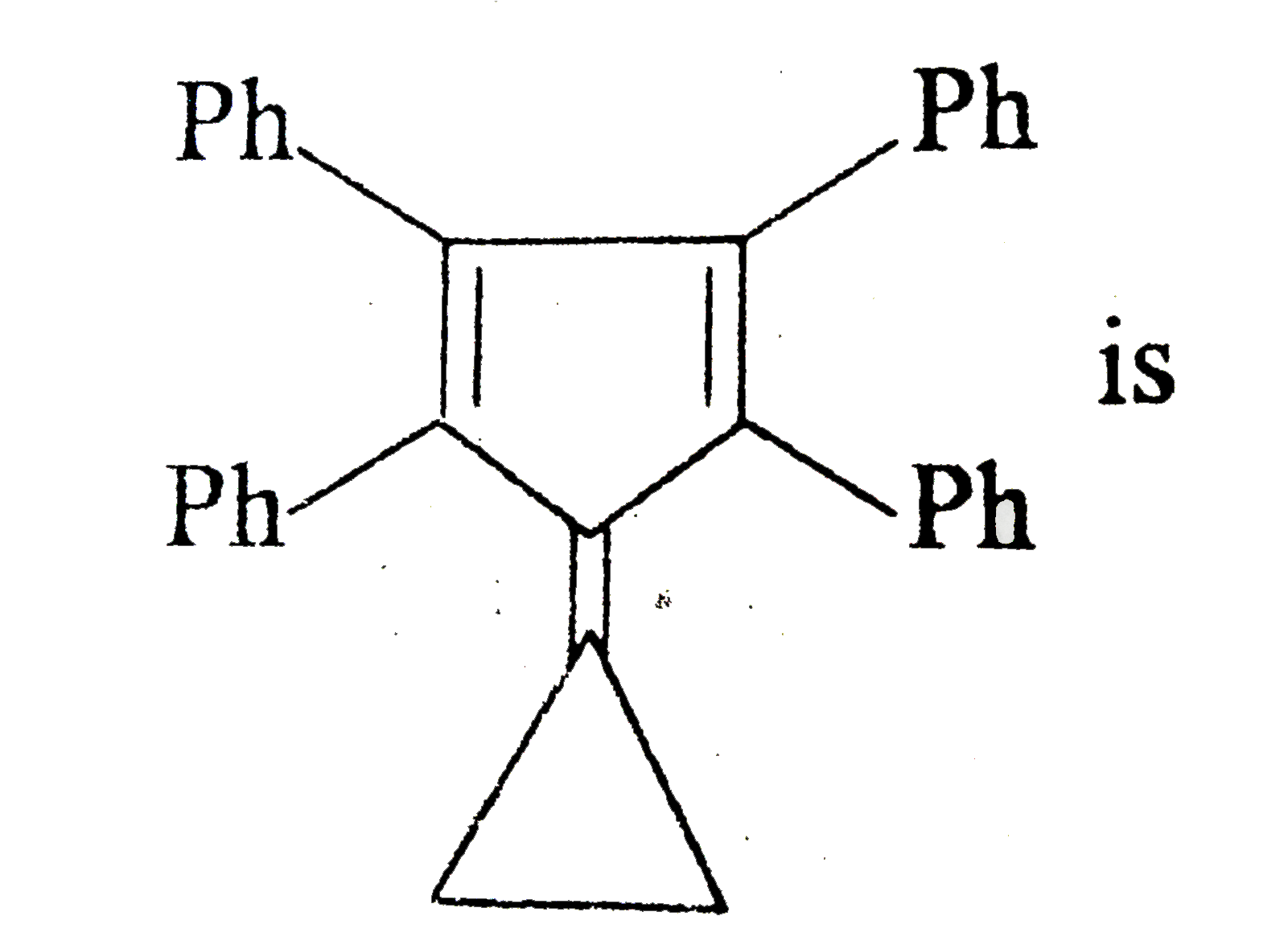A uniform thin rod of mass m and length L is standing vertically along the y-axis on a smooth horizontal surface, with its lower end at the origin (0,0). A slight disturbane at t = 0 causes the lower end t slip on the smooth surface along the positive x-axis, and the rod starts falling.
(i) What is the path followed by the centr of mass of the rod during its fall?
(ii) Find the equaiton to the trajectory of a point on the rod shape of the path of this point?
The correct Answer is:A, B
To solve the problem step by step, we will address both parts of the question regarding the motion of the uniform thin rod.
Step 1: Analyze the Motion of the Rod
The rod is initially standing vertically along the y-axis with its lower end at the origin (0,0). When a slight disturbance occurs, the lower end of the rod begins to slip along the x-axis while the rod starts to fall.
Step 2: Determine the Path of the Center of Mass
1. Identify Forces: The only forces acting on the rod are its weight (mg) acting downward through its center of mass and the normal force from the ground at the lower end. There are no horizontal forces acting on the rod.
2. Horizontal Motion: Since there are no horizontal forces acting on the rod, the horizontal acceleration is zero. Therefore, the horizontal velocity of the center of mass remains constant, which is zero at the start.
3. Vertical Motion: The center of mass will only move vertically downward under the influence of gravity. Thus, the path followed by the center of mass is a straight vertical line downwards.
Conclusion for Part (i): The path followed by the center of mass of the rod during its fall is a straight vertical line downwards.
Step 3: Determine the Trajectory of a Point on the Rod
1. Define the Point on the Rod: Let’s consider a point P on the rod that is at a distance r from the lower end. As the rod falls, this point will trace a path.
2. Use Geometry: At any instant, let θ be the angle that the rod makes with the vertical. The coordinates of point P can be expressed in terms of r and θ:
- The vertical position (y-coordinate) of point P is given by:
y=rsin(θ)
- The horizontal position (x-coordinate) of point P is given by:
x=rcos(θ)
3. Relate θ to the Position: The length of the rod is L, and the center of mass is at a distance L/2 from the lower end. The relationship between the angle and the coordinates can be established using trigonometric identities.
4. Establish the Equation: Using the Pythagorean theorem:
sin2(θ)+cos2(θ)=1
Substituting for y and x:
(yr)2+(xr)2=1
Rearranging gives:
y2+x2=r2
This indicates that the point P traces a circular path of radius r.
5. Shape of the Path: Since the rod is falling while the lower end moves horizontally, the trajectory of point P will describe an elliptical path as the angle θ changes continuously.
Conclusion for Part (ii): The trajectory of a point on the rod is elliptical in shape.
Summary of Solutions:
- (i) The path followed by the center of mass is a straight vertical line downwards.
- (ii) The trajectory of a point on the rod is elliptical in shape.
The rod is initially standing vertically along the y-axis with its lower end at the origin (0,0). When a slight disturbance occurs, the lower end of the rod begins to slip along the x-axis while the rod starts to fall.
1. Identify Forces: The only forces acting on the rod are its weight (mg) acting downward through its center of mass and the normal force from the ground at the lower end. There are no horizontal forces acting on the rod.
2. Horizontal Motion: Since there are no horizontal forces acting on the rod, the horizontal acceleration is zero. Therefore, the horizontal velocity of the center of mass remains constant, which is zero at the start.
1. Define the Point on the Rod: Let’s consider a point P on the rod that is at a distance r from the lower end. As the rod falls, this point will trace a path.
- The vertical position (y-coordinate) of point P is given by:
y=rsin(θ)
- The horizontal position (x-coordinate) of point P is given by:
x=rcos(θ)
sin2(θ)+cos2(θ)=1
Substituting for y and x:
(yr)2+(xr)2=1
Rearranging gives:
y2+x2=r2
This indicates that the point P traces a circular path of radius r.
- (i) The path followed by the center of mass is a straight vertical line downwards.
- (ii) The trajectory of a point on the rod is elliptical in shape.
Topper's Solved these Questions
- ROTATIONAL MOTIONBOOK - SUNIL BATRA (41 YEARS IITJEE PHYSICS)CHAPTER - ROTATIONAL MOTIONEXERCISE - MCQs with one correct answer
1 Videos
- MOTIONBOOK - SUNIL BATRA (41 YEARS IITJEE PHYSICS)CHAPTER - MOTIONEXERCISE - JEE Main And Advanced
63 Videos
- SIMPLE HARMONIC MOTIONBOOK - SUNIL BATRA (41 YEARS IITJEE PHYSICS)CHAPTER - SIMPLE HARMONIC MOTIONEXERCISE - JEE Main And Advanced
69 Videos
Similar Questions
A uniform rod of mass M and length L is standing vertically along the y-axis on a smooth horizontal surface as shown. A small disturbance causes the lower end to slip on the smooth horizontal surface and rod starts falling. The path followed by centre of mass of the rod during the fall is

View SolutionA uniform thin rod of mass m and length l is standing on a smooth horizontal surface. A slight disturbance causes the lower end to slip on the smooth surface and the rod starts falling. Find the velocity of centre of mass of the rod at the instant when it makes an angle θ with horizontal.
View Solution
Knowledge Check
A uniform rod AB of mass m and length l is at rest on a smooth horizontal surface. An impulse p is applied to the end B. The time taken by the rod to turn through a right angle is
A(2πmlpB(2π)(pmlCπml12pDπpmlA uniform rod AB of mass m and length l at rest on a smooth horizontal surface. An impulse P is applied to the end B. The time taken by the rod to turn through a right angle is :
 A2πmlPBπml3PCπml12PD2πml3P
A2πmlPBπml3PCπml12PD2πml3PA uniform rod AB of mass m and length l at rest on a smooth horizontal surface . An impulse P is applied to the end B. The time taken by the rod to turn through a right angle is :
 A2πmlPBπml3PCπml12PD2πml3P
A2πmlPBπml3PCπml12PD2πml3P
A uniform thin rod of mass m and length l is standing on a smooth horizontal suface. A slight disturbance causes the lower end to slip on the smooth surface and the rod starts falling. Find the velocity of centre of mass of the rod at the instant when it makes an angle θ with horizontal.
View SolutionA uniform rod AB of mass m and length l is at rest on a smooth horizontal surface. An impulse J is applied to the end B perpendicular to the rod in horizontal direction. Speed of the point A of the rod after giving impulse is:
View SolutionA uniform rod of mass m and length l is at rest on smooth horizontal surface. An impulse P is applied to end B as shown.

The point about which rod rotates just after impulse being applied is located at
View SolutionA uniform rod of mass m and length l is at rest on smooth horizontal surface. An impulse P is applied to end B as shown.

Distance travelled by the centre of the rod, while rod rotates by 90∘
View SolutionA uniform straight rod is placed in vertical position on a smooth horizontal surface and released. As the rod is in motion, the centre of mass moves
View Solution
